Our Favorite Finalists from Smithsonian’s Annual Photo Contest

Every year, the Smithsonian holds a photo contest highlighting some of the best photographs from around the world. Here are our favorite finalists. If you want to weigh in, vote on your favorites . The winner will be announced Tuesday, March 28.
Photo:
Taking place every July across Galicia, the Rapa das Bestas, or the “Shearing of the Beasts,” involves cutting the manes of semiferal horses that live in the mountains. Horses are rounded up into enclosures called curros, where the foals are branded and the adults groomed before being freed.
Photographer: Javier Arcenillas
Location: Pontevedra, Spain
Category: Natural World
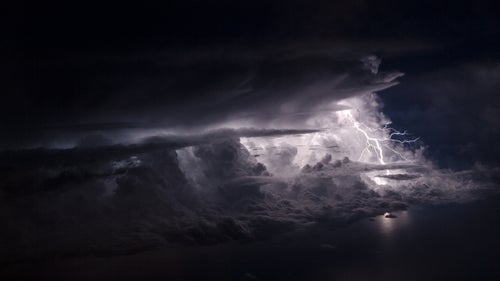
“We were the very last to get on a small plane taking us from Sochi to Saint Petersburg. Little did we know what was waiting for us up above. I took the window seat, not expecting to see much since a light drizzle was landing on the plane. But as we took off, it became clear I had the best seat on the plane.”
Photographer: Lina Samoukova
Location: In the sky above the Black Sea, Sochi, Russia
Category: Natural World
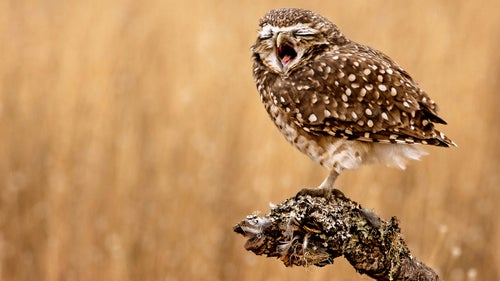
An owl appears to yawn.
Photographer: Mario Gustavo Fiorucci
Location: Santa Rosa, La Pampa, Argentina
Category: Natural World
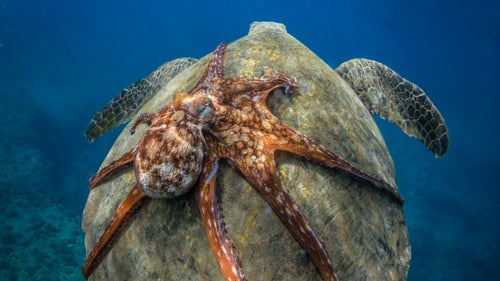
An octopus hitches a ride on a sea turtle’s shell.
Photographer: Michael B. Hardie
Location: Makaha, Hawaii
Category: Natural World
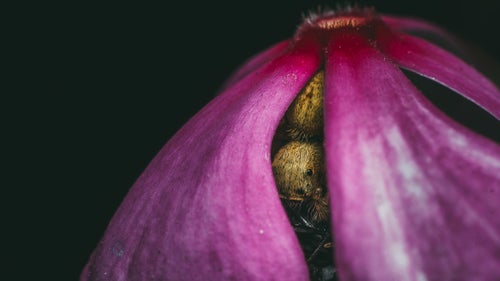
A spider with a housefly kill, hiding under the petals of a Madagascar periwinkle bloom.
Photographer: Swaroop Singha Roy
Location: Kolkata, India
Category: Natural World

“A green sea turtle rises to the surface for a breath just off the coast of Florida. During nesting season, I go out with our amazing biologists, scientists, and volunteers who help to protect and document sea turtle habitats in South Florida.”
Photographer: Ben Hicks
Location: Boca Raton, Florida
Category: Sustainable Travel
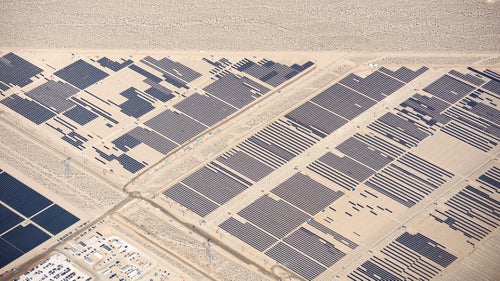
“Spread over an area of 400 acres, the Nevada Solar One is a massive project built in the hot and dry desert just south of Las Vegas. The plant uses 760 parabolic trough concentrators with more than 182,000 mirrors that concentrate the sun’s rays onto more than 18,240 receiver tubes. The projected CO2 emissions avoided is equivalent to taking approximately 20,000 cars off the road annually. It is a refreshing site to look at. I, for one, can’t wait to fly a solar-powered aircraft. This image is a part of a large project documenting our transition to clean and renewable energy.”
Photographer: Jassen Todorov
Location: Nevada Solar One, Nevada
Category: Sustainable Travel
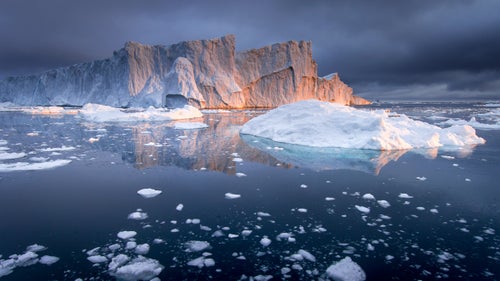
“This image was captured while on an expedition to document one of the largest calving events in 2016. The objective of the journey was to promote environmental awareness and education about the significant climatic changes occurring in the Arctic. This single calving event produced enough ice to meet the domestic freshwater needs of the United States for six months. The image was captured at 1:00 a.m. during the last sunset before summer’s 24-hour light.”
Photographer: Kerry Koepping
Location: Jakobshavn Glacier, Illulisat Icefjord, Greenland
Category: Sustainable Travel
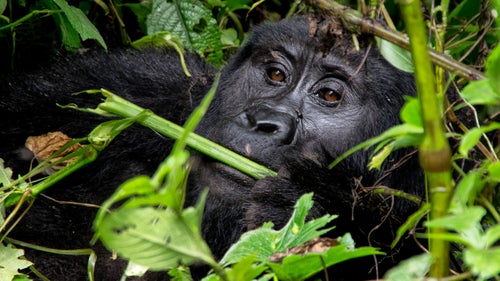
“I see visiting the mountain gorillas in Uganda as sustainable travel because the visits support the local community while protecting the endangered gorillas. Tourists can pay to visit families of these magnificent animals for one hour a day, up to eight trekkers at a time. Over time, the gorillas have habituated to people and are tolerant of their visitors. The rangers dedicate their lives to protecting the gorillas, and you can clearly see that they love their job. Porters are hired from the local community to help the trekkers through the jungle. The porters are rotated on a regular basis so that more people in the community can work. This way, the local community receives a benefit, and gorilla poaching is less likely.
“After about 1.5 hours of trekking through the forest, we were fortunate to be able to watch these magnificent animals up close. This photo is of a female gorilla enjoying a midday meal. There are fewer than 1,000 mountain gorillas left on earth.”
Photographer: Lynda Hanwella
Location: Bwindi Impenetrable National Park, Uganda
Category: Sustainable Travel
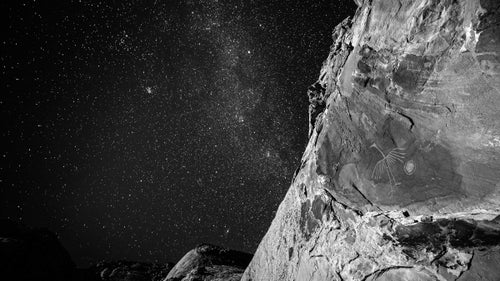
“In what is now Bears Ears National Monument, a friend and I spent hours of wandering until we came upon the Soaring Crane. We sat in the canyon until nightfall and photographed the art by the light of a thin moon. This area of the Utah desert is a land of dark skies and one of the least light-polluted places in the continental United States. Its ancient walls and art exist far from urban boundaries. We visit to step out of the modern world and, for a brief time, remember how the planet was and how our species dwelled for millennia. The stars and planets above our heads comprise the same sky that guided the Crane’s artists. These sites need to be appreciated in their original context under the same dark, starlit sky that inspired our religions, mythologies, mathematics, and sciences.”
Photographer: Marc Toso
Location: Bears Ears National Monument, Utah
Category: Sustainable Travel